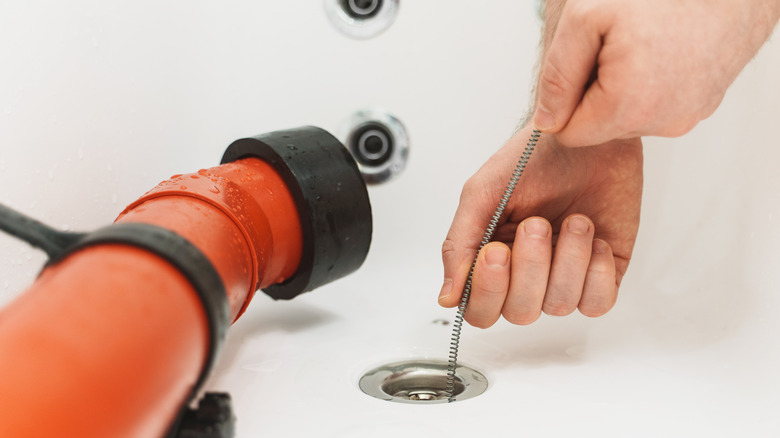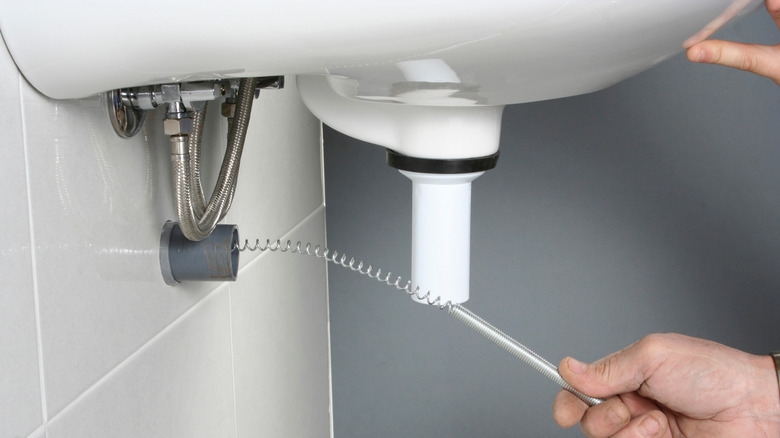Why You Need To Clean Your Drain Auger (It's Simpler Than You Think)
We may receive a commission on purchases made from links.
If you've ever used a drain auger, you know how much of a hero it can be when your sink or shower decides to back up. This little tool saves you from expensive home repairs and plumber visits by taking care of nasty clogs in no time. Whether it's hair in the bathroom drain or grease in the kitchen sink, an auger gets the job done by digging deep into your pipes and pulling out the gunk. But once the clog is removed and your drain is flowing freely again, there's one step you shouldn't overlook — cleaning the auger itself.
After all, a tool that deals with grime and gunk needs proper maintenance to remain effective and hygienic. If you toss it back into storage without giving it a good clean, you're not doing yourself (or your tool) any favors. For one, all that leftover grime can dry and harden, making the auger harder to use next time. Even worse, bacteria and odors can start to build up, which is the last thing you want lurking in your storage space. And don't forget rust — if your auger isn't properly cleaned and dried, it won't be long before it starts corroding.
The good news is that cleaning a drain auger isn't as scary as it sounds. You don't need fancy tools or special skills — just a few minutes and some basic supplies. Putting in a little effort now means your auger will last longer, stay effective, and not gross you out the next time you use it as a fast fix for a clogged sink.
Easy tips to keep your drain auger clean and ready
First things first: gloves. Before you even think about touching the auger after pulling it out of a drain, grab a pair of sturdy waterproof gloves from the DS Safety Store. This isn't just to keep your hands clean — it's also to protect you from sharp edges and bacteria. Then, pull the auger out carefully and wipe off as much debris as you can with a disposable cloth or paper towel. You'll be surprised (and maybe a little horrified) at how much gunk comes off with this step alone.
Next, rinse the auger thoroughly under warm water. If you can, do this outside or in a utility sink to avoid clogging your clean drains. Use a little dish soap or mild detergent to break down grease and residue. A scrub brush or even an old toothbrush can help you get into the nooks and crannies of the auger. Don't skip the tip of the tool — it's the part that does the heavy lifting and is likely covered in the most buildup.
Once your auger is squeaky clean, it's time to dry it off. Grab a clean towel and wipe it down as much as possible, then let it air dry completely. Leaving it damp is a surefire way to invite rust, which will wreck your tool over time. If you really want to go the extra mile, spray the auger with Hot Shot's Never Rust lubricant after it's dry. Finally, store your auger properly. Ideally, it should go back into its original case or a sealed container to keep it protected from dust and moisture.

